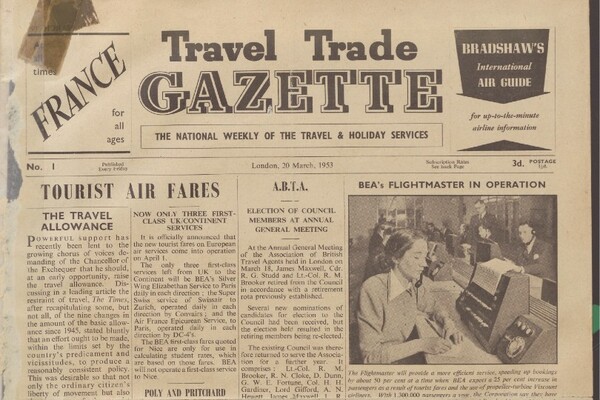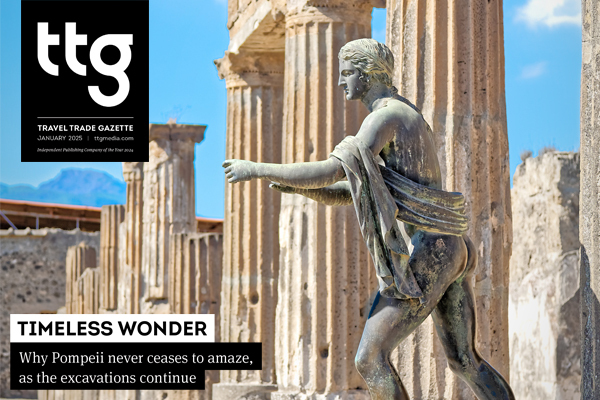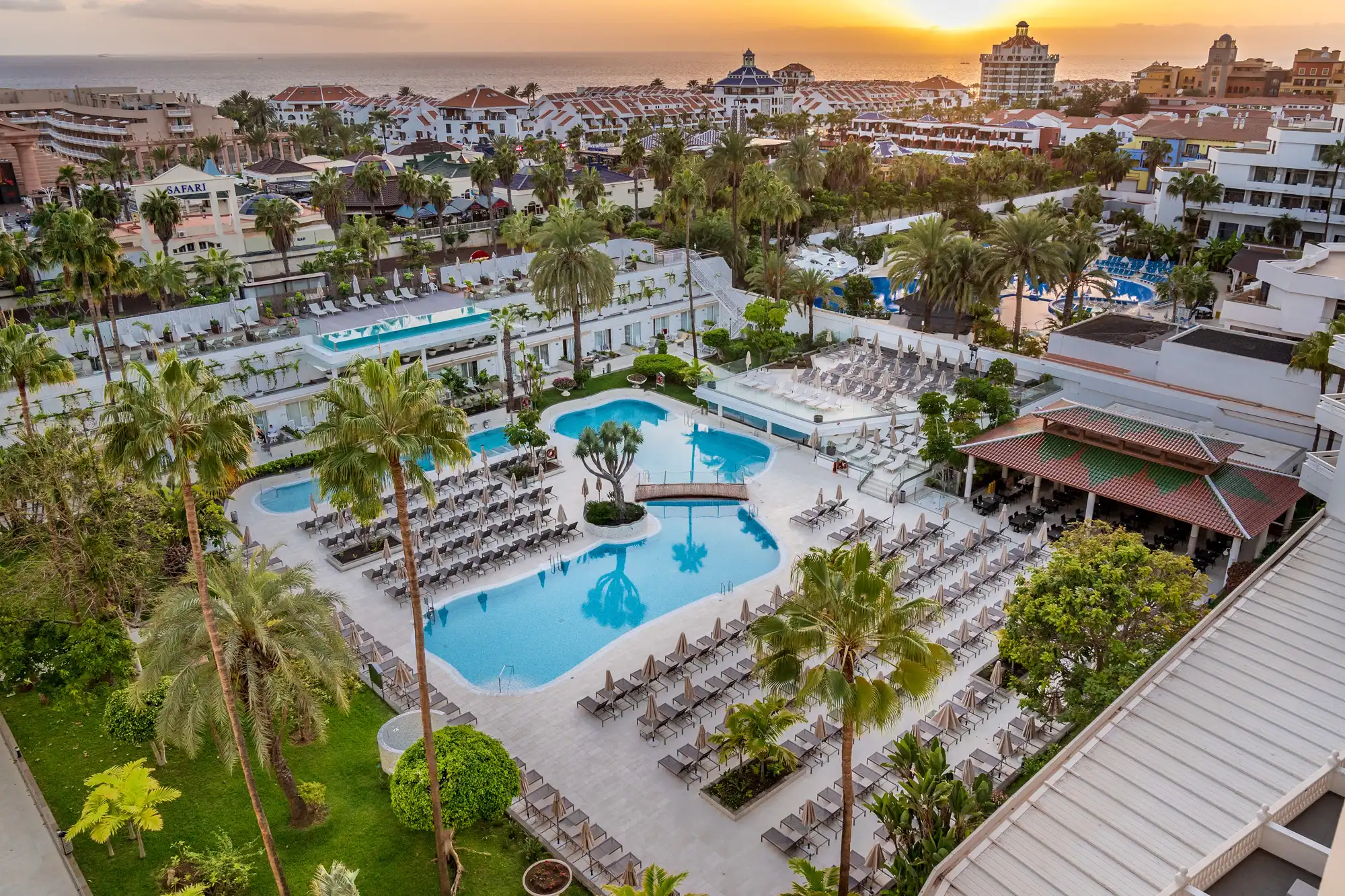TTG at 70: The rise of mass travel, and where it all began
 Gary Noakes
Gary NoakesIn our 70th anniversary year, TTG is looking back at some of the biggest stories in the history of the modern travel industry, and the effect these key moments have had on the sector as we know it today. This month, we go right back to the very start with a look at TTG’s first edition from 27 March 1953.
Appropriately, the first-ever edition of TTG in March 1953 carried a headline celebrating the increasing number of “Tourist Air Fares”. It’s incredible to think, but in the post-war period, governments set restrictions on air fares to keep people and their cash in the country. That meant very high air fares, and a travel allowance limiting the amount of money you could take abroad.
TTG’s first editions reported the emergence of these new tourist fares, saving an average of 25%. It was not yet the beginning of mass travel, though; a “cheap” return to Palma with BEA, flying from Northolt airport near Heathrow, still cost almost £40 – or £886 in today’s money.
Increasing the amount of money that could be spent abroad was an immediate benefit for agents, TTG reported. Before this, “too often when trying to contract for accommodation... it had been let to agents from a country with a higher travel allowance”. Britons were allowed £25, then raised to £40. But the Danes were allowed £100 and for the Swiss, it was unlimited.
General Tours (London) told TTG: “Immediately the increase was announced, a notice was displayed in our window with the result that we were flooded with enquiries.” Baldwins in Tunbridge Wells summed up the intervention: “Our impressions are that a number of people have decided that a continental holiday is now well worthwhile.”
TTG also detailed how jet travel was shrinking journey times. BOAC, then the UK’s foremost long-haul airline, cut stopover times on its Comet routes, meaning London-Singapore was reduced by two hours to 25 hours 25 minutes, with a stop in Rangoon.
The Comet was due to be tested across the Atlantic, which TTG noted “is the worst route as far as weather is concerned, and very little is known about flying conditions at 30-40,000 feet. No passengers will be carried on these flights”.
What did it all mean?
The eventual abolition of air fare protection – rates were subject to negotiation between airlines, governments and Iata – and the development of jet-engine aircraft like the Comet in this decade marked the beginning of affordable mass travel.
However, there was still a long way to go, as Iata reported that although almost 60% of transatlantic passengers purchased tourist class fares in the first three months of their introduction in 1957, a 15-day round tourist fare from London to New York was still £162 – that’s £3,100 today.
The genie was out of the bottle though, and TTG’s first 10 years ended with PanAm proposing a 39% cut in transatlantic air fares to a lead-in of £57 one-way (£1,902 return today). It’s a far cry from today’s lead-in of around £380 return, but change was well on its way.
For full access to the 70-year archive, join TTG+ by visiting ttgmedia.com/plus.
TTG at 70: Opening up the archives
During our 70th anniversary year (2023), TTG charted the history of the travel industry through a series of special features delving into the magazine's 70-year back catalogue, all of which is archived on the TTG Media website. Here is the story so far:
- How travel took on the Covid crisis – and won
- The long journey to package holiday perfection
- How travel agents have stood the test of time
- The extraordinary rise of the cruise industry
- Aviation's highs and lows through the ages
- The ash cloud, the rise of cruise – and the death of an institution
- How – and why – terror changed travel forever
- The 90s – the decade that just about saw it all
- How travel's boom-bust nature came to be
- The 'big bang' that made travel affordable for all
- All hail the package in the Swinging Sixties
- The rise of mass travel, and where it all began
Sign up for weekday travel news and analysis straight to your inbox

Gary Noakes
Supplier Directory
Find contacts for 260+ travel suppliers. Type name, company or destination.








